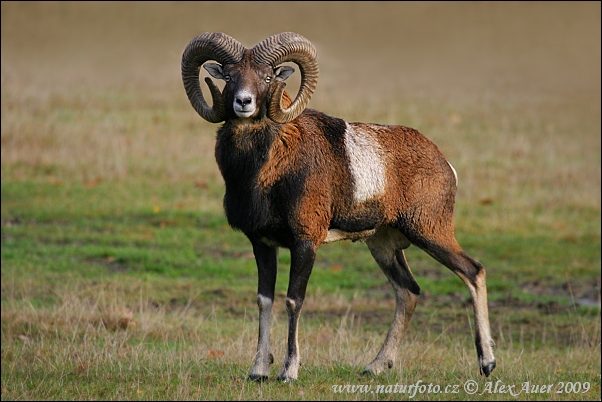THE SHEEP
History
 |
| Domestic sheep were once wild Mouflon. |
FEEDING
Water
Sheep should always have access to fresh, clean water. The average 150 lb ewe during maintenance will need about two gallons per day. Ewes with lambs will drink about three gallons per day. Knowing the approximate amount of water your animals will consume daily is beneficial so you know the size of the bucket/trough to get.
Minerals
Sheep-specific loose minerals are preferred. Try not to feed sheep/goat minerals or all-stock minerals. They may be safe, but the level of copper needed to satisfy other species' nutritional needs may be toxic to sheep. You can feed mineral blocks, but a sheep will consume more minerals they need if it's a loose mineral. Also, sheep will chew on the mineral blocks, wearing down their teeth faster, reducing their useful life. Minerals should be fed in covered feeders or indoors so they will not be ruined by the rain.
Balanced Diets
These diets are a recommended guideline; adjust rations based on your sheep's condition, weight, litter size, feed nutrient composition, etc.
Hay/Pasture Only Diet (no grain) - Based on a 150 lb ewe raising twins
Maintenance: 3 lbs of hay per day
Early/Mid Gestation: 3.5 lbs of hay per day
Late Gestation: 5 lbs of hay per day
Lactation: 8.5 lbs of hay per day
Hay/Pasture + Grain Diet - Based on a 150 lb ewe raising twins
Maintenance: 3 lbs of hay per day
Early/Mid Gestation: 3.5 lbs of hay per day
Late Gestation: 3 lbs of hay per day + 0.5 lb 16% sheep feed per day
Lactation: 5 lbs of hay per day + 1.5 lbs 16% sheep feed per day
Pasture
Your sheep do not need to be fed hay if they have access to pasture (you can substitute the hay portions above for free choice pasture). You should feed hay if you do not have access to quality pasture (quality pasture means green grass at least four to five inches in height with no poisonous plants and a very minimal amount of weeds).
HEALTHCARE
De-worming
Most people de-worm their sheep once per year during shearing or lambing time. Some sheep may require more frequent de-worming than this, others less frequently. One sure-fire way to tell if your sheep needs to be de-wormed is if they're anemic. Anemic sheep will have pale eye lids, usually white or pink in color (do not get the eye lids confused with the whites of the sheep's eye!), and healthy sheep (not in need of de-worming) will have bright red eye lids.
One thing to remember is that you do not want to use white de-wormers (such as Valbalzen, Fenbendazole, etc) during pregnancy as it can cause birth defects. Ideally, don't de-worm during pregnancy; if you do, use a clear de-wormer.
